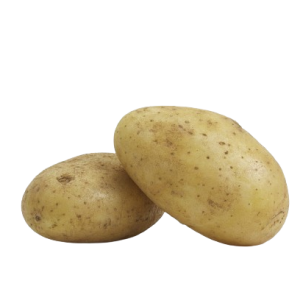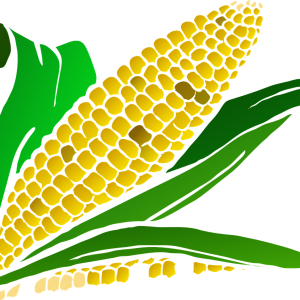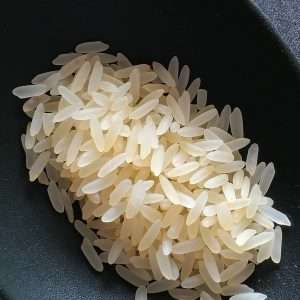【1】Promote seed germination and regulate seedling growth
Triacontanol
Soaking seeds with 0.2~0.5mg/L triacontanol for 4~12h can improve the germination vigor of wheat. The soaking time is proportional to the effect of improving germination vigor. Meanwhile, the seed soaking with triacontanol can also improve the growth rate of wheat seedlings in the field.
Sodium Nitrophenolate
Before sowing the wheat seeds, soak the seeds with sodium nitrophenolate at 6-12mg/L for 12 hours, and then air them to half dry before sowing, which can break the seed dormancy, promote germination and rooting, and make the shoots thick and strong.
Chitosan
Coating with 125-165mg/kg (seed) or soaking seeds with 0.1%-0.2% liquid for 24h can activate protease, promote seed germination and seedling growth, improve seedling quality and enhance plant resistance.
Fulvic acid
Seed soaking with 1.67% fulvic acid solution for 30min has the effect of improving the germination rate of wheat and promoting the growth of wheat seedling stage. Compared with the control, the germination rate increased by about 4.87% after 24h. Irrigation of wheat with 0.2% fulvic acid in the field can significantly increase the chlorophyll content of wheat in the field at seedling and greening stages.
Gibberellic acid
The wheat seeds were soaked with 10 mg/L gibberellic acid for 24 hours, rinsed with distilled water 3 times, spread out on filter paper, and then placed in a petri dish for observation. The results showed that the germination index increased by 20.4% and the germination rate increased after soaking. 11.2%, germination potential increased by 21.0%
Naphthalene Acetic Acid (Sodium)
Wheat was cultured with 10 mg/L, 1 mg/L, 0.1 mg/L, 0.01 mg/L, 0.001 mg/L, 0.0001 mg/L, 0.000 01 mg/L naphthalene acetic acid (sodium) solution, and water culture was used as control. After 4 days, the wheat sprouts, root length, chlorophyll content and root activity were measured. The results showed that naphthalene acetic acid (sodium) exhibited low concentration promoting and high concentration inhibiting effects on the growth of wheat roots and shoots. Roots are more sensitive to naphthalene acetic acid (sodium), when the concentration is 0-0.00001 mg/L, 0.00001 mg/L can significantly promote the growth of roots, the average root length is 4.83 cm; the concentration of naphthalene acetic acid (sodium) is 0-0.1 mg /L treatment group had longer buds than the control group, and the effect of 0.0001mg/L treatment was the most obvious. Appropriate concentration of naphthalene acetic acid (sodium) has different degrees of promoting effect on the growth of wheat roots and shoots, and wheat roots are more sensitive to naphthalene acetic acid (sodium) than shoots.
6-BA
Soaking seeds with 15~20mg/L6-BA for 24h, or spraying 2.5~25mg/L liquid on the surface of wheat at 2 leaves and 1 heart stage can improve the germination rate and germination potential, and can improve the ability of seedlings to resist low temperature and drought , and can alleviate the damage of heavy metal stress on seedlings, but its effect varies with wheat varieties.
【2】Control the elongation of internodes and prevent the leggy growth of wheat
Prohexadione calcium
5% prohexadione calcium effervescent granules were applied about 7d before jointing. The results showed that applying 5-7 g of prohexadione calcium per mu could significantly reduce wheat plant height, increase plant base internode diameter, and improve photosynthetic rate, 1000-grain quality and yield. Among them, “Wanmai 68” applied 7g/mu, which could increase the yield by 9.89%; “Zhengmai 9023” applied 5g/mu, which could increase the yield by 11.29%.
Chlorhexidine
Seed soaking with 500-2000mg/L chlorophyll solution for 4 hours can improve the germination rate of wheat seeds, reduce the height of wheat plant and the center of gravity, shorten the length of the second internode at the base, increase the thickness, enhance the mechanical strength of the stem, and reduce the lodging. coefficient decreases. Among them, low-concentration seed soaking treatment can significantly increase the amount of wheat roots and promote strong seedlings; seed soaking treatment with 2000mg/L chameleon solution combined with foliar spraying of 500mg/L champhetamine solution at jointing stage can improve the lodging resistance of wheat stems best effect.
Mepiquat chloride
300mg/L of mepiquat chloride sprayed in the late stage of wheat rising, compared with the control group, the plant height was significantly reduced by about 2.8 cm, the flexural resistance of the stem base of the plant was also greater than that of the control group, and the effect on the dry mass of the base internodes was greater than that of the control group. Compared with the control group, the dry mass of the first section increased by 36.5%, and the dry mass of the second section increased by 34.9% compared with the control group. It has a good effect on reducing plant height, increasing stem strength, preventing wheat growth, preventing lodging, improving seed setting rate, increasing thousand-grain weight and yield.
Paclobutrazol
Soaking seeds with 100mg/L paclobutrazol solution for 24 hours or spraying the whole plant with 200-400mg/L solution at 1 leaf and 1 heart stage can control plant height, increase chlorophyll content, promote greening, and enhance plasma membrane stability. Enhance the resistance of seedlings; before the wheat gets up to jointing, the whole plant is sprayed with 5-6g of active ingredients per acre, which can control the plant height, reduce the plant height by 3.7cm, and increase the stem diameter by 14.6%. The quality of 1000-grain and 1000-grain increased. Spraying paclobutrazol can make wheat plants dwarf, enhance lodging resistance, and increase wheat yield.
Uniconazole
Uniconazole inhibited the growth of aerial parts. The root length of wheat seedlings treated with 20mg/L uniconazole was 11.17cm long. increased by 106.0%, 100.0% and 80.4%, and the chlorophyll content increased by 18.7%, 11.1% and 6.3% respectively compared with the control. After 20mg/L and 40mg/L uniconazole treatment, the germination vigor and germination rate of wheat seeds increased by 55.5% and 22.2%, 50% and 39.9%, respectively, compared with the control, while the germination vigor and germination rate of 60 mg/L uniconazole were increased. The germination rate was lower than the control. Seed soaking with uniconazole can promote wheat seedlings and enhance plant resistance, which is beneficial to wheat production, but attention should be paid to controlling the concentration.
【3】Improve rice seed setting rate and increase yield
Triacontanol
The foliar spray is applied from the booting stage to the grain-filling stage of wheat, and the spraying effect is the best during the floret differentiation stage. 0.5mg/L triacontanol can increase the number of grains per panicle, 3.8 grains per panicle, and can significantly increase the number of secondary roots and plant height per plant. content, enhance photosynthesis, and then promote wheat flowering and fruiting. If it is used after heading to the grain filling stage, it can also promote ripening. Compared with the control group, the wheat after spraying matures 2 to 3 days earlier, and the concentration range of 0.5 to 1 mg/L can increase the seed setting rate of wheat and increase the yield by 10% to 10%. 12%, if the concentration exceeds 2.55mg/L, the 1000-grain weight and yield of wheat will decrease, and if the concentration is lower than 0.1mg/L, the wheat yield cannot be increased.
Sodium Nitrophenolate
Spraying sodium nitrophenolate at the heading stage and grain filling stage of wheat can increase the seed setting rate, reduce the empty seedling rate, increase the 1000-grain weight and increase the yield. The application concentration of 1.4% sodium nitrophenolate at 6-16 mg/L had the best effect on increasing wheat yield, and it was advisable to spray once before heading and before full heading.
Sodium naphthalene acetate
20~30d after transplanting the seedlings, spray the flag leaves and panicle with 15~30mg/L liquid medicine, which can promote tillering, increase the rate of ear formation, increase the number of grains per panicle and 1000-grain weight, and promote the increase of yield.
Ascorbic acid
Spraying 30mg/L ascorbic acid liquid on the wheat booting stage can improve the effective tillering rate, ear formation rate, 1000-grain weight of wheat, and increase the yield by 15% to 30%, and the effect is remarkable. At the same time, it can improve the immunity of wheat, show special effect against powdery mildew, and the average control effect on wheat powdery mildew is over 85%.
Kinetin
Spraying 25-50 mg/L kinetin at jointing stage, flowering stage and 10 days after flowering can significantly increase the number of grains per ear and 1000-grain weight of wheat, thereby significantly improving grain yield.
6-BA
Spraying with 10-30mg/L6-BA at the grain filling stage can improve the photosynthesis of wheat, promote the accumulation of dry matter and its distribution to grains, slow down the adverse effects of waterlogging on yield formation, and promote stable and increased yield.
P-Chlorophenoxyacetic acid
During the grain filling period of wheat, spray 25kg of 60mg/L p-chlorophenoxyacetic acid solution per mu, which can effectively defend against dry and hot wind, increase thousand-grain weight and promote yield.
S-allocin
Spraying 2 mg/L liquid medicine at the turning green stage can significantly promote the growth of wheat tillers and secondary roots; spraying 12.5 mg/L liquid medicine at the booting stage of wheat can greatly increase the yield of wheat.
【4】Inhibit ear/seed germination
Paclobutrazol
Applying 15g of paclobutrazol 27d before wheat mature, the control effect on ear germination at 7d and 11d after wheat maturity can reach 78.24% and 53.85% respectively, and has little effect on grain weight.
Chlorhexidine
Applying 150 g of chameleon 20d before the wheat matures, the control effect on the ear germination at 7d and 11d after the wheat matures can reach 58.04% and 32.33%, respectively, with little effect on the grain weight.
Mepiquat chloride
Applying 6.25 g of mepiquat chloride 27d before the wheat matures, the control effect on the ear germination of the wheat at 7d and 11d after maturity can reach 67.99% and 24.75% respectively, but it has a great impact on the thousand-grain weight.
Allocin and Salicylic Acid
The seeds were soaked with 70mg/L, 140mg/L and 200mg/L inducine solution for 6 hours respectively. The exogenous inducin had a certain degree of inhibitory effect on seed germination, and showed a dose effect that the higher the concentration, the stronger the inhibitory effect, and the highest inhibitory effect. The effect can reach 74.67%. The compounding of 70 mg/L inducine and 1100 mg/L salicylic acid significantly inhibited the germination of seeds, and had significant effects on different varieties of wheat such as “Kenong 199”, “Nei 8” and “Xiaoguan 54”. The germination-inhibiting effect of alloanthin alone was closely related to cultivar genotype.
We are based in Henan, China, start from 2021,sell to South America(31.00%),North America(25.00%),Western Europe(15.00%),Central America(8.00%),Oceania(5.00%),Eastern Asia(5.00%),Eastern Europe(4.00%),Southeast Asia(3.00%),South Asia(2.00%),Africa(00.00%),Mid East(00.00%). There are total about 5-10 people in our office.
Always a pre-production sample before mass production;
Always final Inspection before shipment;
Gibberellin GA3,Cytokinin,Rooting Hormone,Fruit Coloring,Plant Growth Inhibitor
1. Professional supplier of Gibberellic acid,IBA, 6-Benzylaminopurine, CPPU,abscisic acid and other plant growth regulators 2. 12 years exporting experience with customers all over the world 3. Product has been approved by SGS
Accepted Delivery Terms: FOB,CFR,CIF,EXW,FAS,CIP,FCA,CPT,DEQ,DDP,DDU,Express Delivery,DAF,DES;
Accepted Payment Currency:USD,EUR,JPY,CAD,AUD,HKD,GBP,CNY,CHF;
Accepted Payment Type: L/C,D/P D/A,MoneyGram,Credit Card,PayPal,Western Union,Cash,Escrow;
Language Spoken:English,Chinese,Spanish




